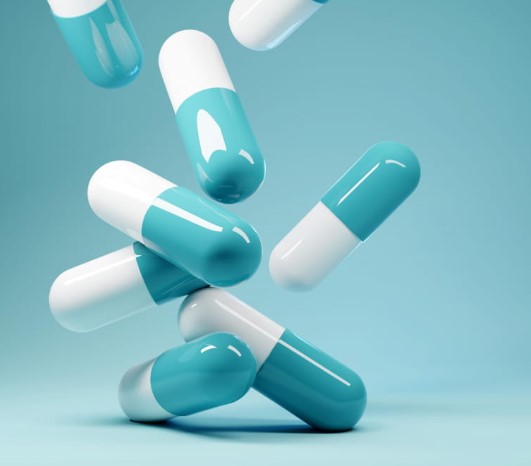Penicillin: history, uses and side effects

Photo is illustrative in nature. From open sources.
Penicillin is one of the most famous antibiotics, which was discovered in 1928 by the British bacteriologist Alexander Fleming . He found that the mold, which accidentally got on the culture of bacteria, destroyed most of the microorganisms. This discovery was a revolution in medicine and contributed to the development of antibiotic therapy.
Penicillin is an antibiotic from the group of beta-lactam drugs. It acts on bacteria by blocking the synthesis of their cell walls. Penicillin is effective against many types of bacteria, including staphylococci, streptococci, pneumococci, and many others.
The use of penicillin is widespread in medicine for the treatment of various infections, such as tonsillitis, sepsis, pneumonia, meningitis and others. It can be used both in the form of injections and in the form of tablets.
However, like any other antibiotic, penicillin can cause unwanted effects. Some of them can be serious, so you should consult your doctor before starting treatment.
The main side effects of penicillin are allergic reactions. They may present as urticaria, angioedema, angioedema, or anaphylaxis. In case of any allergic reactions, you should immediately seek medical help.
In addition, penicillin can cause various side effects, such as nausea, vomiting, diarrhea, headache, dizziness, sleep disturbance, and others. They usually do not require special treatment and go away on their own after discontinuation of the drug.
Despite possible side effects, penicillin remains one of the most effective and widely used antibiotics in medicine. It is able to quickly and effectively destroy bacteria, which allows you to quickly cure many infections.
However, like other antibiotics, penicillin should only be used as prescribed by a doctor and strictly following the dosage and regimen. This will help to avoid possible side effects and reduce the risk of developing bacterial resistance to the drug.
Read together with it:
- Antibiotics in milk: the problem and ways to solve itMilk is a staple food that is widely used by people around the world. However, despite its benefits and popularity, there are concerns about the presence of antibiotics in milk. This is because some farmers may useantibiotics for the treatment of animals or the prevention of diseases, which may resu...
- Antibiotic tests pioneerTests forAntibiotics are an important tool in medicine for determining the sensitivity of bacteria to various antibiotics. A Pioneer in this field is a technique developed in the 1950s that can quickly and efficiently determine the effectiveness of antibiotics against specific microorganisms. In thi...
- My husband's attitude made me depressedI have been depressed for the last 2 years. I am 36 years old,married for 11 years, two children - 8 years and 4 years old. I haven’t worked for 8 years, I stay at home with the children.When the eldestI sent my daughter to kindergarten, she began to constantly get sick, after 7 months she was still...
- Antibiotics in milkУже давно звучат призывы мирового медицинского сообщества о сокращении приема антибиотиков до необходимого минимума. Ведь суперинфекция, которой не страшны никакие лекарства, перестала быть мифом — теперь это страшная реальность. Но, как оказывается, недостаточно ограничиться приемом лекарств исключ...
- Green snot... When should you take antibiotics?Green snot is one of the symptoms that can accompany a cold or flu. Often people turn to antibiotics to get rid of green snot, but this may not be the right approach to treatment. Antibiotics are not a universal cure for all types of infections. They are only effective against bacterial infections, ...
- Antibiotics in buckwheat: myth or reality?Buckwheat is one of the most popular grain crops in Russia and other countries. Its high nutritional value and availability make it a favorite for many people. But is there a connection between buckwheat and antibiotics? There are many myths about what buckwheat containsantibiotics . However, scient...
- Antibiotics in fish: myth or reality?Fish is one of the most popular food all over the world. It is rich in proteins, vitamins and minerals, and also contains essential fatty acids, which are essential for human health. However, there is an opinion thatfish may containantibiotics , which are used in industrial fisheries to treat fish d...
- Antibiotics in flounder, myth or reality?The flounder isfish , which is very popular in many countries of the world. However, the use of flounder can lead to dangerous consequences, since this fish may containantibiotics . In this article, we will talk about 10 reasons why you should give up flounder. 1. Flounder may contain antibiotics. T...
- CefacetrilCefacetril is an antibiotic that belongs to the class of third-generation cephalosporins. It is used to treat various infections caused by bacteria, including pneumonia, sepsis, urinary tract infections, and skin infections. The action of cefacetril is based on its ability to destroy the cell walls ...
- CeftiofurCeftiofur is an antibiotic that belongs to the fourth generation cephalosporin class. It is widely used to treat infections caused by bacteria that are sensitive to this drug. Ceftiofur is highly active against gram-negative bacteria such as E. coli, Klebsiella, Proteus and Pseudomonas. It is also e...
